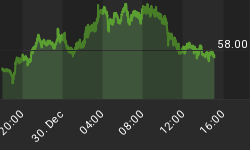As 2009 moves past its midpoint, many market participants are briskly trying to forget the carnage of 2008 and the first quarter of 2009. But, before we get lost in the euphoria of the 36% Dow rally in the Spring/Summer of this year, a little hindsight is in order. In March, the Dow had plunged to 6,547, or some 53 percent down from its nominal 14,164 high in 2007. Despite the recent gains, we are still nearly 40% below the 2007 peak. This is a brutal truth that everyone seems to be ignoring.
Last week, Merrill Lynch, that storehouse of economic sagacity, announced that the recession was over. Even the bearish NYU economist Nouriel Roubini was reported as saying "the worst is behind us." However, wishing earnestly for something does not make it so.
Admittedly, the financial meltdown that threatened in late 2008 appears to have been contained. In addition, the Fed's actions in the credit markets have held interest rates down and turned the yield curve positive. The credit markets also have started to ease. In addition, the federal government's injection of trillions of dollars into the economy has "boosted confidence" for those too short-sighted to know the consequences. This welcome news has provided impetus to equities.
In combination with reassuring remarks by senior administration officials and retail investors' wish not to be left behind, money has started to move back into American equities. The resultant rally in stocks seems to have validated the preceding optimism.
Among these desperate green-shootniks, the smoking gun of recovery can be found in the exceptional earnings reported last week by Goldman Sachs and JPMorgan Chase, both of which surpassed estimates by healthy margins. These reports may have led to a general market rally, which even bad news about CIT failed to defuse.
In looking realistically beneath the Wall Street and political hype, seven fundamental points emerge which investors should note carefully:
First, much of last week's rise was based on small 'up' volume. This indicates that the surprisingly good earnings reports led the 'shorts' to cover in near panic. Traders, knowing that the 'shorts' had to cover at any cost, lost no time marking prices up, which pulled in investors anxious to catch the wave.
Second, we cannot forget that the banks in receipt of TARP funds, including Goldman and JPMorgan, have been able to invest these surplus tens of billions of dollars in the markets, allowing them to capitalize on the great run-up of the last few months. But this is a temporary phenomenon. Given JPMorgan's warning about commercial property lending, it is questionable that the great bank earnings of the second quarter can be repeated. Meanwhile, Goldman Sachs is effectively a giant hedge fund, relieved of potentially massive losses at AIG. Masquerading as a bank, it has privileged access to Fed Funds at or near zero percent -- talk about public financing! Therefore, no one should take these earnings as anything other than a one-time windfall from a rigged system.
Third, some of the major banks, such as Citi and Bank of America, appear to be falling behind government demands for recovery plans. This, combined with the massive exposure of U.S. banks to the declining value of commercial real estate, raises the possibility of another round of bank bailouts.
Fourth, statewide budget crises, such as the one that is coming to light in California, are likely to hit every state with a big city, save perhaps Texas.
Fifth, many investors have become shell-shocked by the 40 percent erosion in their portfolios. They can be forgiven for not jumping back into the equity market action for awhile.
Sixth, the recent spate of federal deficit spending has placed an enormous strain on Treasury debt markets. The United States now faces a sharp interest rate hike, or a loss of its prized Triple-A credit rating. Consequently, investors see increasing opportunities for profit in overseas stock and government bond markets. This potential diversion of funds from American stock markets will tend to lessen the chances of a strong recovery at home.
Finally, while the U.S. stock markets may be rising, the economic picture is far from promising. It is becoming increasingly apparent that short-term recovery is unlikely to occur without significant increases in consumer spending. With unemployment still rising at about 500,000 workers a month, this is unlikely.
Most importantly, long term recovery is impossible without significant structural changes in the economy. Such movements are nowhere to be seen.
For a more in-depth analysis of our financial problems and the inherent dangers they pose for the U.S. economy and U.S. dollar, read Peter Schiff's 2007 bestseller "Crash Proof: How to Profit from the Coming Economic Collapse" and his newest release "The Little Book of Bull Moves in Bear Markets." Click here to learn more.
More importantly, don't let the great deals pass you by. Get an inside view of Peter's playbook with his new Special Report, "Peter Schiff's Five Favorite Investment Choices for the Next Five Years." Click here to dowload the report for free. You can find more free services for global investors, and learn about the Euro Pacific advantage, at www.europac.net.
















